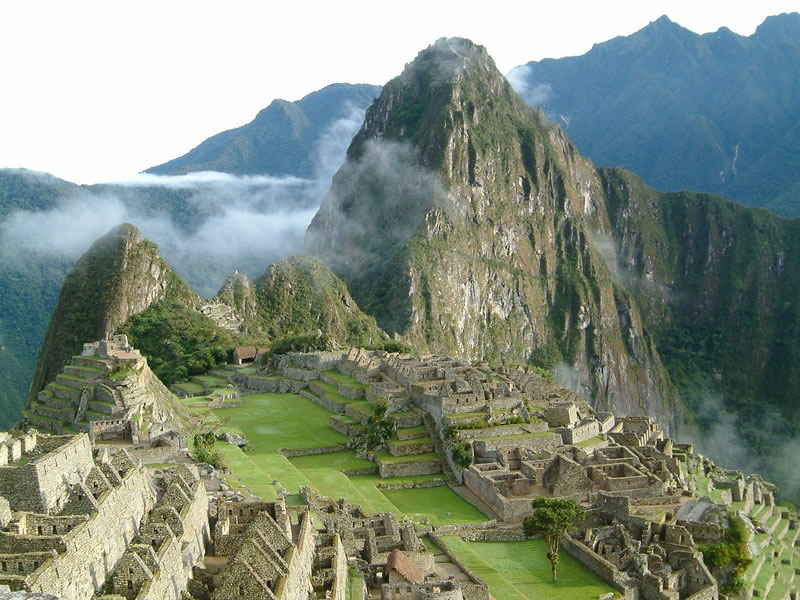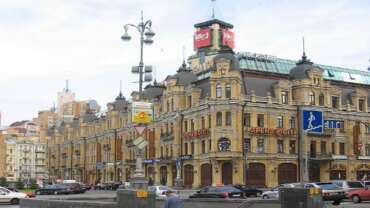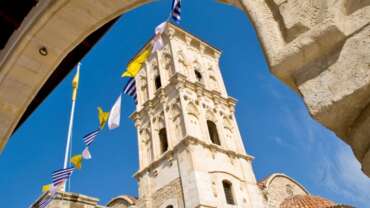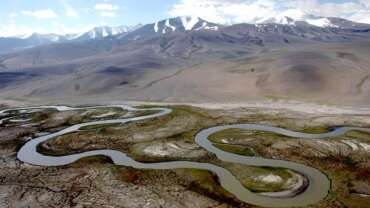Peru - Land of the Incas
Peru is a country in South America that’s home to a section of Amazon rainforest and Machu Picchu, an ancient Incan city high in the Andes mountains. The region around Machu Picchu, including the Sacred Valley, Inca Trail and colonial city of Cusco, is rich in archaeological sites. On Peru’s arid Pacific coast is Lima, the capital, with a preserved colonial center and important collections of pre-Columbian art.
Peru: A country with every kind of tourist resource
Peru is one of very few countries whose inventory of tourism resources includes every type recognized by world tourism specialists:
Natural locations, with a variety of eco-systems and a high degree of biodiversity in world terms; it is one the few countries in the world that can offer the traveler sun and beaches, snow sports, and adventure in the tropical jungle at any time of year.
Historical structures that show the signs of civilization from paleolithic times through various stages of Andean cultures until they reached their prime in the grand buildings of the Incas.
Folklore, with expressions of dance, music, gastronomy and crafts that are unique to each one of the regions.
Remarkable human achievements such as the temples and fortresses built at high altitudes (Chavin, Kuelap, Machu Picchu), the mysterious Nasca Lines, and colonial churches.
Programmed events in which visitors can participate, such as the case of many popular festivals -Corpus Christi in Cusco or the Virgen de la Candelaria in Puno- which are held throughout the year.
History of Peru
Peru is one of the great originating centers of ancient culture, along with Mexico, Mesopotamia, India, and China. Paleolithic man left his first traces here and began to develop villages of hunters-collectors around 6,000 BC (as seen in Lauricocha, Huanuco). Farming settlements began to form around 2,500 BC, growing manioc, lima beans, quinoa, potatoes, cotton and maize.
Prior to the arrival of the Conquistadors from Europe, Peruvian history is divided into five stages or horizons:
Early Horizon (1200 BC – 200 BC): Small states were formed, with the elite holding economic and religious power. Chavin de Huantar (Ancash) belongs to this stage, with its temple of underground passages that include monochromatic pottery and megalithic art. Other key remains are those of Caral (Lima) and Sechin (Ancash).
Intermediate Early Horizon (200 BC – 600 AD): This is the era of the great centers of regional development. The important cultures are those of Tiahuanaco (Puno), Mochica and Lambayeque (Lambayeque and La Libertad), Nasca and Paracas (Ica). Tiahuanaco is known for its Chullpas or funeral towers at Sillustani (Puno); the Mochica are famous for the Royal Tombs of the Lord of Sipan; the Lambayeque built the pyramids of Tucume; the Nascas made remarkable pottery and drew the mysterious Lines in the desert; and the Paracas wove wonderful textiles.
Middle Horizon (600 AD – 900 AD): The epoch when the Wari culture spread throughout the Andean region. Evidence lies in the citadels of Wari (Ayacucho), Pikillacta (Cuzco) and Marca Huamachuco (La Libertad).
Late Intermediate Horizon (900 AD – 1400 AD): This period is marked by a group of regional states with well defined cultural features. The important cultures are those of Chimu and Chincha on the coast; Cajamarca and Huanta in the highlands; and Chachapoyas in the north jungle. The structures of this period are the Chimu citadel of Chan Chan (La Libertad), the funeral center of the Windows of Otuzco in Cajamarca, and the Chanchapoyan citadel of Kuelap (in Amazonas).
Late Horizon (1400 AD – 1532 AD): This is the period predominated by the Incas, native to Cusco, who built an imperial form of government throughout the entire Andean world. Their main legacy is the architectural contribution in the buildings and constructions in Cusco. This period concludes in 1532 with the Spanish Conquest.
The Colonial period developed between 1532 and 1821, from which there is a magnificent artistic heritage. Examples include paintings such as those of the so-called Cusco School; architecture as in the Santo Domingo convent in Cusco (built on the ancient Inca temple of Koricancha) and the convent of Santa Catalina in Arequipa. Independence was declared on July 28, 1821 and later consolidated with the victory of the Battle of Ayacucho on December 9, 1824.
A center of cultural dissemination. The ancient inhabitants of this territory began domesticating animals around 6,000 BC, and to develop farming even earlier in 8,500 BC. This process was simultaneous on the coast, in the Andes and in Amazonia. In fact, the Andean area which we call ancient Peru – where the cultures of Chavin, Tiahuanaco, Cajamarca, Recuay, Moche, Chimu, Lambayeque, Paracas, Chincha, Nasca and Wari developed and were later joined under the Inca Empire- is one of the world’s first and greatest agricultural centers and one of the major areas from which universal culture spread, together with Mesopotamia, China, India and Mesoamerica.
People of Peru
Throughout the pre-Hispanic period, the peoples of Peru were largely isolated from one another by the rugged topography of the country. At least three times, however, a unifying culture spread across the Andes. Beginning c. 1000 BCE, the Chavín culture permeated the region, emanating possibly from the northern ceremonial site of Chavín de Huántar. After about 600 CE, the Huari civilization, based at a site of the same name near modern Ayacucho, dominated most of the central Andean region. Finally, the Inca empire developed, eventually to control all of the territory from northern Ecuador to central Chile.
Ethnic groups
Mestizos (persons of mixed Indian and European descent) constitute about three-fifths of Peru’s population, and Quechua Indians make up about another one-fourth. There are also small minority populations of people of European ancestry, Aymara Indians, people of Japanese ancestry, and people of other ethnicities.
Modern Peru’s complex ethnic mosaic is rooted in its history. The Spanish conquerors dominated the indigenous Indians and colonial Peruvian society, including politics, religion, and economics. They brought their European culture, the Spanish language, and the Roman Catholic religion to the region. The Spaniards introduced some African slaves, but the number of slaves transported to this part of South America was not significant; their descendants are found mainly in Lima and a few central coastal valleys. Following independence (1824) and the prohibition of slavery (1854), Chinese arrived to work as farm labourers, and new groups of Spaniards, northern Europeans, and Japanese were among other arrivals. These diverse ethnic groups have tended to intermarry over time.
Differences in lifestyles and attitudes are pronounced. Peruvians of Spanish descent and mestizos live mainly along the coast and control most of the country’s wealth. Typically, a small group of people of European ancestry hold the main power in government and industry. Mestizo culture is a blend of Indian and European ways known as criollo. The Spanish-speaking mestizos make up the middle class of Peruvian society. They hold managerial, administrative, and professional jobs, but some are also small landowners and labourers. The Indians of the Sierra live in extreme poverty in a harsh environment; many remain both indifferent to and outside the mainstream affairs of the country. Land reform acts in the 1960s and ’70s have brought some improvement, such as the dismantling of haciendas—typically large estates with absentee owners—and reallocation of the land in smaller segments to individuals or cooperatives. However, many highland Indians still shepherd llama herds or work tiny plots of land to eke out a living. The lowland Indians of Amazonia occupy a social position similar to that of the highland Indians.
Languages
During the pre-Hispanic period, the Inca spread their language, Quechua, across the highlands and along the coast, although some groups near Lake Titicaca spoke Aymara at the time of the Spanish conquest. Quechua and Aymara are still prevalent and have official usage, with Spanish, in regions where they are heavily spoken. Tropical forest areas were outside Incan influence, and the numerous languages and dialects now spoken in the Amazon region reflect the diverse linguistic heritage of the tropical forest peoples. Like their Inca ancestors, the overwhelming number of Indians read neither their own nor any other language. In major cities and tourist areas, however, English and other European languages are commonly spoken.
Religion
Peru’s constitution provides for freedom of religion. More than three-fourths of Peruvians are Roman Catholic; between one-tenth and one-fifth are Evangelical Christians; other Protestants and followers of traditional beliefs form small religious minorities.
Ancient Peru had various polytheistic and pantheistic religions. The most important gods were Viracocha (lord, creator, and father of men) and Pachamama (Earth mother). The Sun, Moon, and such phenomena as lightning and mountains were also worshipped. Each culture raised temples to honour its local divinity.
The Hispanic conquest of the Incas brought new religious traditions to the Andean area. The Spanish indoctrinated the Indians and spread Roman Catholicism, built hundreds of churches, and held fiestas for patron saints in each village. The people were not strict in their practices, however. Protestant sects proliferated during the 20th century, and the Indians have mixed many pagan beliefs into the Roman Catholic rituals to produce a syncretic religion rich in traditions.
Natural Biodiversity of Peru
Peru has sparked a series of world records that would astonish even the most skeptical researcher. Due to the astounding variety of climates and ecosystems, it is among the world’s top eight nations in terms of biodiversity where one can find 84 of the 104 life zones existing around the planet.
Thirteen percent of the Amazon tropical forests are in Peru, and Peru ranks 8th in the world for total forest area. The Colca and Cotahuasi canyons, in Arequipa, vie for first place as the deepest on earth. The largest river in the world, the Amazon, begins in Peru and most of the world’s highest navigable lake, Titicaca, is within Peruvian territory.
Peru is one of only 12 countries in the world that rank as biological megadiversity. There are almost 25,000 species of plants (10% of the world total), of which 30% are only found in Peru.
In wildlife, it ranks top in diversity of fish (2,000 species, equal to 10% of the world’s species), first in birds (1,816 species, including the condor).
Peru is also home to about 10% of all mammals and reptiles living on the planet and more than 20% of the earth’s birds. The late Theodore Parker III, famous American field ornithologist once said “Peru offers bird enthusiasts more than any other country in the world…Being here is like being a child visiting a huge store filled with new and fascinating toys. He was right.
Third in amphibians (379 species, including the black crocodile), third in mammals (462 species, including the ocelot and black spectacled bear), and first in butterflies.
It ranks second in the world for its variety of primates 35 species, including the unique woolly, yellow-tailed monkey.
There are 460 species of mammals that are catalogued as original to Peru, 1,745 species of birds, 297 species of reptiles, 332 amphibians, 1,800 ocean and fresh water fish, and thousands of species of mollusks, spiders and insects.
The insects also deserve special mention. On one single tree in the Tambopata amazon in Peru`s southeast, scientists identified over 5000 different species, including more ant species that can be found in all of the british isles. Amazing, right?
PERUVIAN CUISINE AMONGST THE WORLD BEST
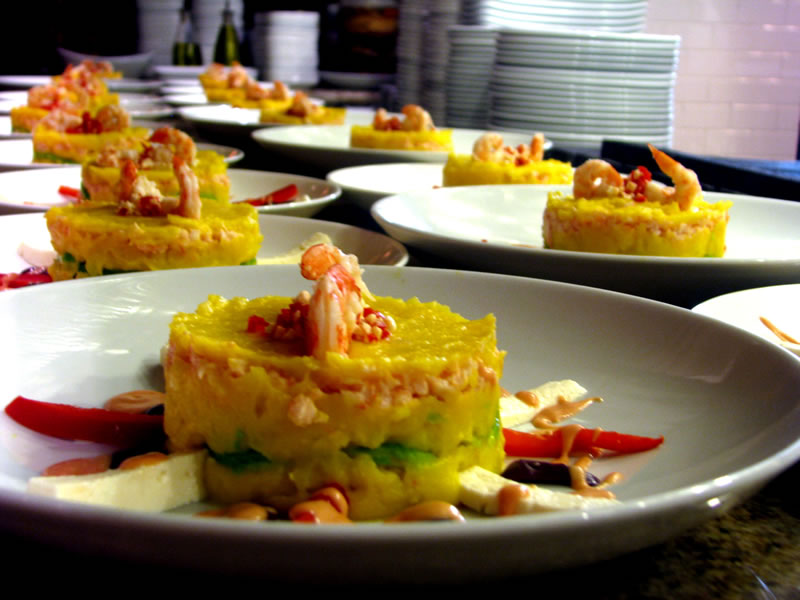
The culinary history of Peru goes back to the Pre-Inca and Inca times with original products such as the potato and corn, which constitute great contributions to the World.
According to the connoisseurs, the Peruvian Cuisine is not only the best cuisine of Latin America, but also is amongst the best of the World, alongside the chinese, Italian and the french cuisines. It is not only known for its exquisite taste, but also for its variety.



